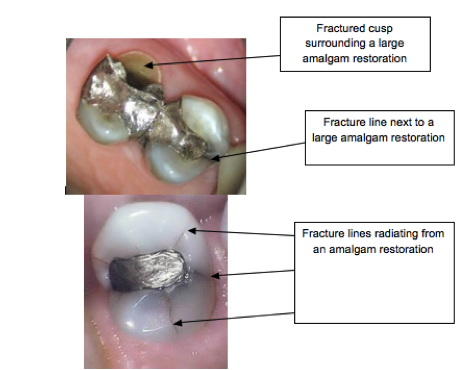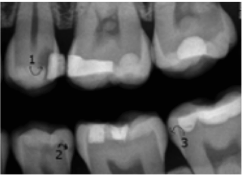When should I replace my old amalgam/metal fillings? We recommend replacing any amalgam restoration that displays signs of leakage, that is adjacent to a fracture, that has tooth decay around or beneath it, or if it is causing a significant cosmetic issue. We evaluate old amalgam restorations very closely with visual examination, probing, x-rays, and intraoral photography. Should I replace my old amalgam/metal fillings because they are dangerous or have mercury? There are no consistent scientific findings confirming that the mercury in amalgam restorations causes specific long-term health issues. There is anecdotal evidence suggesting the mercury may be harmful, and this is an ongoing debate in dental research. At this time, we do not recommend replacing metal/amalgam restorations simply because you have
Tag: dental tips
Amalgam/Mercury Restorations vs. Composite/Tooth-Colored Restorations
Amalgam/Mercury Restorations vs. Composite/Tooth-Colored Restorations Many of us have had amalgam/mercury restorations placed in our teeth over the years, and patients often wonder what the differences are between these old restorations and the newer, tooth-colored composite restorations. Amalgam restorations include some level of mercury, which helps to make them soft when they are initially placed. Once the restoration has hardened, it is thought that the mercury is released at low levels over long periods of time. Amalgam is mechanically retained in your tooth, meaning the tooth is prepared in a specific shape that allows the restoration to lock into place. Because of this, amalgam restorations are often quite large and involve removal of healthy tooth structure to create a ‘wedge’ shape
Bitewing Radiographs – what are they and why do I need them?
What are bitewings? Bitewing radiographs are a series of two or four radiographs taken to provide diagnostic information about posterior (back) teeth. When do I need bitewings? The standard of care is to take bitewing radiographs a minimum of one time per calendar year. A full mouth series, which includes bitewings and other radiographs, is taken a minimum of one time every 5 years. Why do I need bitewings? Bitewings provide diagnostic information about your teeth that cannot be obtained in any other manner. What happens if I do not get bitewings? Tooth decay between your teeth may go undiagnosed and untreated. It is always more conservative, less invasive, and less costly to diagnose tooth decay early when it has just started, and bitewings provide the information required
What Is Cosmetic Dentistry?
We all want to go to the dentist, but our fears usually stem from the unknown. So, what exactly is cosmetic dentistry, anyways? This usually involves anything that makes your teeth and smile better that its current condition. This can range from teeth whitening all the way to veneers. Cosmetic dentistry, and Dr. Troupe also see it as a way to help improve your overall appearance, including self-esteem and confidence – not just your smile. Here are some basic definitions of cosmetic dentistry and services we offer here at Polished Dental: Teeth Whitening 1. Teeth Whitening: a way of restoring the overall luster of your entire smile, removing stains and discolorations caused by food, beverages, tobacco, and aging. 2. Porcelain Veneers: custom restorations, handcrafted specifically for your unique





